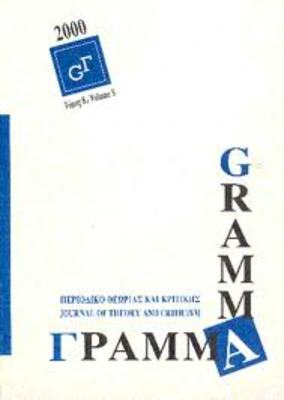Images of war and the war of images
Part of : Γράμμα : περιοδικό θεωρίας και κριτικής ; Vol.7, No.1, 1999, pages 121-152
Issue:
Pages:
121-152
Parallel Title:
Εικόνες πολέμου και ο πόλεμος των εικόνων
Author:
Abstract:
In recent decades, war images and the technologies used to produce/disseminate them, have been widely accused for being an integral part of modern warfare and for inducing a spectacular, voyeuristic and morally distant attitude towards war. This view, elaborated mainly by S. Sontag, P. Virilio and J. Baudrillard, is shown to derive from an anti-visualist discourse that has come as a result of a synthesis of the mass culture theories and the antitechnological and anti-representational problematics which was initially formulated by Heidegger and subsequently developed by Sartre and Foucault. This anti-visualist discourse, successor to a long iconoclastic tradition, by making the technical image responsible for the evils of modern civilization, cultivates a negative fetishism of the technical image which, besides reducing the audience to cynical misanthropes, effectively paralyses any possibility for political action. The alternative approach outlined here suggests that since the Renaissance, the field of visual representation in general, and specifically that concerned with the depiction of war and violence, was gradually emancipated from the control of political and religious authority, ending up, in the age of the technical image, to become extremely heterogeneous and ridden with conflicts between antagonistic visual ideologies and ideological visions. A review of the development of war imagery in this period, reveals that the anti-war visual tradition is consistently characterized by an emphasis on the depiction of the horrific human costs of war. On its opposing side, we have a rival visual tradition that focuses on the glorification, aestheticization and sanitization of war, as well as, the efforts of political authority to reassert its control over the production and circulation of war images. In the context of this war of war images the possibility of political intervention and the distinctive character of the humanist discourse are rediscovered and reaffirmed.
Subject:
Subject (LC):
Notes:
Περιέχει φωτογραφίες, σημειώσεις και βιβλιογραφία




